Crucial Information for Parents Concerning Clavicle Fractures in Infants
Clavicle Fractures
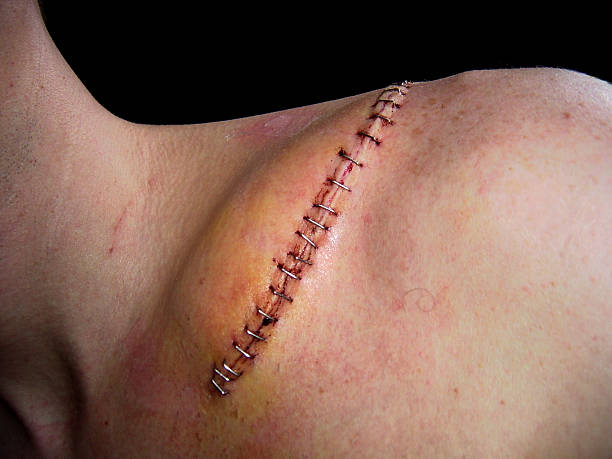
The happiness of bringing a new baby into the world is unmatched. However, parents need to be aware of the various health issues that may affect their children. One of these problems is a fractured collarbone. So, what is a newborn’s clavicle fracture? The definition of a clavicle fracture, how it may affect a newborn, how to identify the symptoms, how to receive a diagnosis, how to treat it, and how to feel comfortable are all covered in this blog post. On the other hand, the fracture heals, and what are the long-term consequences?
Understanding What a Clavicle Fracture Is
When we refer to a clavicle fracture, we mean a break in the collarbone. The collarbone is referred to in medicine as the clavicle. Where on earth is this clavicle now? Consider the clavicle as a long, narrow bone extending across the top of your chest from your breastbone to your shoulder blade.
- This bone can fracture for a number of reasons in adults as well as neonates. Yes, regrettably, even our tiny bundles of joy can suffer from this kind of breakage. Now that you understand the basic causes of clavicle fractures let’s take a closer look at how a newborn could sustain one.
- Put another way, there are a number of reasons why a newborn’s clavicle, or collarbone, may break or fracture; we go into more depth about them in the section that follows. For instance, a fracture could occur by placing too much tension on the baby’s collarbone during labor, especially in complicated deliveries. Incidents involving accidents or falls shortly after delivery are also common.
- For instance, a tiny bump from slipping during their first bath could break a newborn’s clavicle. Although these circumstances are incredibly rare, they highlight how crucial it is to proceed with extreme caution and awareness when working with infants due to the fragility of their clavicle and other bones.
What Leads to a Newborn’s Clavicle Fracture?
It’s amazing how difficult it may be for a newborn to adjust to the outer world. The first challenge that often arises on this path is a fractured collarbone. Imagine this: if the birth is difficult, the infant can end up wedged behind the mother’s pelvis bone.
- A collarbone break could be the consequence of shoulder dystocia. Premature babies that are so cute or giant newborns may also be more vulnerable. They might have trouble passing through the birth canal due to their larger size or delicate bone structure, which could lead to a fracture. Despite these risks, it’s important to remember that medical professionals are trained to deal with these situations and will do everything in their power to ensure the safe delivery of your child.
- However, being aware of possible adverse effects, like a clavicle fracture, may provide you with the assurance you need to ask the right questions and promote your child’s health. It’s important to discuss with your healthcare provider any concerns you may have about possible risks during pregnancy and delivery.
How to Recognize the Signs of a Clavicle Fracture in Your Infant
- Since newborns cannot express their pain vocally, it might be challenging to diagnose a clavicle fracture in them. Parents could become keen observers of their infant’s behavior and physical characteristics to spot such issues. It is crucial to recognize any warning signs that suggest a possible fracture of the clavicle. For instance, your baby can have limited range of motion in one arm compared to the other, especially on the fractured side. Another warning sign is unusual crying in response to movement or arm touch.
- In addition, keep an eye out for any signs of swelling or bruises around the collarbone. Infants with clavicle fractures also often exhibit a natural inclination to cuddle up with their arms pressed against their bodies. Remember that your baby looks to you to understand why they are uncomfortable and that recognizing these symptoms early on will help ensure that they receive the treatment they need and have a full recovery.
- While a baby’s clavicle fracture can be problematic, it’s important to understand that these injuries occur frequently after birth and typically heal successfully with the appropriate care. If you have any doubts, trust your instincts, and don’t be scared to see a doctor.
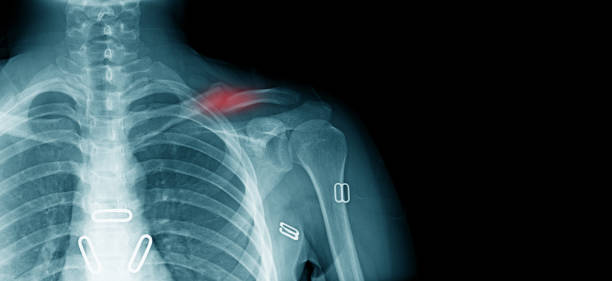
How Is a Newborn’s Clavicle Fracture Diagnosed?
Let’s imagine your youngster seems uncomfortable, and you think the reason could be a broken collarbone. Naturally, taking them to the doctor would be your first thought. Here’s what to expect: Your pediatrician will be your primary resource when identifying a newborn with a collarbone fracture.
- A thorough physical examination is performed first. The doctor will gently palpate the area around the collarbone to look for irregularities or signs of discomfort. There may also be significant indicators if your child seems to have restricted arm movement or if there is clear evidence of swelling or bruises.
- Sometimes, a physical examination is all that is needed to conclude. If there’s any doubt or if the fracture seems significant, your child’s doctor might ask for X-rays. With the use of this imaging technique, they will be able to verify the extent of the fracture and have a better view of the bone structure.
- Despite their terrifying appearance, X-rays are typically painless and harmless for your child. Remain calm. Keep in mind that receiving medical attention as soon as possible is essential for a quick recovery, so don’t put off getting help if you believe your child needs to be feeling better.
- It is crucial to protect your child’s clavicle, and taking these measures will help to maintain its health. Keep in mind that medical personnel are prepared and trained to help in situations similar to this.
The Handling of an Infant’s Clavicle Break
Recuperating from a baby clavicle fracture is typically not difficult because neonates are so incredibly hardy. The primary stage of the healing process involves limiting movement in the arm on the injured side.
- This can be done by putting on a splint or light bandage, which will keep your baby comfortable and provide the injured area the support it needs. Another essential element of the therapeutic method is pain management. Your pediatrician may advise medication to relieve your child’s pain, even though newborns are the greatest at withstanding discomfort.
- You will need to schedule frequent follow-up consultations with your physician to ensure the fracture is healing as expected and to track your baby’s progress. Remember that your little warrior is stronger than you may think, even though the road to recovery may seem difficult! If you give them the right attention and care, they’ll heal swiftly.
- Meanwhile, you can also gently massage your baby’s clavicle to help with the healing process. You can get advice from your pediatrician on the safest method to do this without upsetting your child. Remember that the baby’s clavicle is delicate and that any touch should be done very carefully to avoid further injury or suffering.
- It is best to talk to your pediatrician as often as possible about any observations or concerns you have as your baby’s collarbone heals. Your baby’s clavicle needs to mend correctly for them to continue growing and developing. Consequently, prompt attention to any unusual discomfort or symptoms will ensure a speedy and healthy recovery for your child.
How to Provide Your Baby With Comfort During His Healing
- Getting through your newborn’s recuperation process might take a lot of work. It’s crucial to be cautious when performing routine tasks like changing clothes or diapers because abrupt movements could be painful. Try to make these changes as simple and painless as you can. If you see your youngster wincing or sobbing more than usual, please be very patient.
- Try to keep your infant upright whenever you can to assist reduce pressure on the affected area. It’s especially convenient to be in this position when feeding. Remember that the most important thing is to provide your infant with the most comfort possible during this period.
- Swaddling is another approach to offer comfort. With its mild compression, a quality swaddling blanket can provide additional support and help keep the fractured arm stable and comfortable. By mimicking the warm, comforting sensation of the womb, swaddling your baby helps calm them down during this recovery period as well.
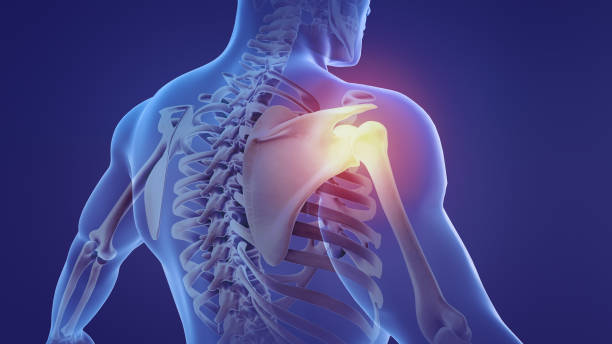
- Lastly, always be mindful of your baby’s signs and actions. Remember that you are their greatest ally right now. By paying close attention to their needs and acting accordingly, you’re not only helping with their physical rehabilitation but also creating a trusting and caring environment. Although it’s distressing, your baby’s clavicle fracture is common and, with the correct care and attention, should heal nicely. However, if you notice any irregularities or develop pain, contact your doctor immediately.
Understanding the Long-Term Repercussions
Let’s discuss a significant issue that most parents could find worrisome: the long-term consequences of a newborn suffering a clavicle fracture. It’s normal to worry about your child’s prospects, particularly in the wake of overcoming a setback such as a fractured collarbone. The good news is that infants are incredible miracles of nature with extraordinary capacity for healing! Their bodies are made to regenerate and mend damage swiftly. As a result, your child’s clavicle fracture will usually heal without any lasting effects.
- However, it is our responsibility as parents to ensure that we are taking all reasonable steps to aid in their rehabilitation and monitor their progress. Talk to your pediatrician frequently. During these check-ups, your doctor can closely monitor the healing process to make sure everything is going according to plan. They’re also essential for quickly identifying any potential problems. If your kid receives the proper care and attention, you may be sure that they will heal fully and thrive.
- Though the journey may seem stressful at first, keep in mind that your newborn is stronger than you realize. And as parents, you are their greatest source of support. Consequently, it’s always a good idea to be informed and prepared to handle any problem that may develop, even if we hope your child’s early years are free of health complications. After all, the love we have for our children makes us capable of amazing things!

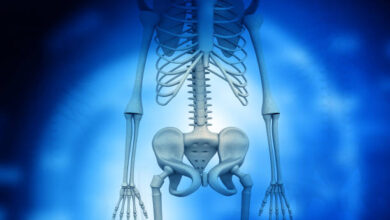
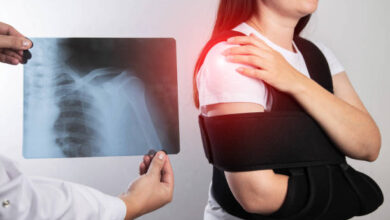

3 Comments